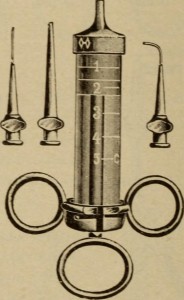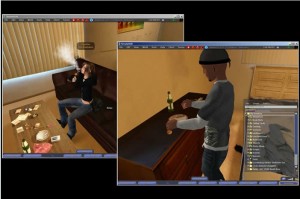 You may have seen some media around some recent research that looked at the impact of high levels of Triclosan on mice. You can look at the study here. Thanks to the brilliant team at the Australian Science Media Centre (via the UK Science Media Centre), there’s some expert feedback on the study and its implications for humans:
You may have seen some media around some recent research that looked at the impact of high levels of Triclosan on mice. You can look at the study here. Thanks to the brilliant team at the Australian Science Media Centre (via the UK Science Media Centre), there’s some expert feedback on the study and its implications for humans:
Dr Oliver A.H. Jones, Lecturer in Analytical Chemistry at RMIT University Melbourne, said:
“The results of this study are certainly interesting but I do not think they are a cause for concern for human health.
“Firstly the mice used in the study were primed with a tumor promoting chemical before being exposed to triclosan (which humans would not be) and the concentrations of triclosan used were much higher than those found in the environment.
“It is also worth remembering that mice are not mini humans and what happens in a mouse liver is often very different from what happens in human livers, or even in those of other rodents. For example, previous studies on rats, and hamsters treated with triclosan did not show any tumor formation at all. Thus the present study, whilst interesting, does not show the full picture.â€
Â
Dr Nick Plant, Reader in Molecular Toxicology at the University of Surrey, said:
“This study has been undertaken robustly and the experimental findings are reasonable. Note that the authors study only mice, and draw conclusion only on mice. Their comments on human health are very circumspect.
“As the authors state, it is difficult to assess if the dose that they use in mice is relevant to human exposure levels, but at a simple examination it appears to be much higher than I would expect to see in a human. This further complicates extrapolation to the human situation as we are not comparing equivalent exposures.
“The data does support the action of triclosan on the nuclear receptor constitutive androstane receptor(CAR), and that this could act as a tumour promoter. The suggestion that this action could be further exacerbated by the regenerative hyperplasia seen in humans suffering from liver disease is reasonable, but there is no real evidence to support this.
“However, the authors do not address a key point in their paper, which is whether the proposed mechanism is conserved across species. The previously reported effects of Triclosan on the nuclear receptor PPARalpha do not impact human health as the PPARalpha signalling pathway is different between rodents and humans (and the authors dispute these anyway). In this paper, the authors suggest that the tumourogenic mechanism is via another nuclear receptor CAR. For this nuclear receptor there is also a considerable species difference in response, with chemicals (including carcinogens) acting differently between rodents and man.
“On this basis, it is not valid to state that the effect of triclosan in mice will occur in humans as well, indeed the historical body of evidence suggests a species-dependent effect is more likely. However, as with all new signals, it is important to examine them and decide if they are biologically plausible in the species of concern (in this case humans). I would treat this paper as interesting, but would not see it as the basis for a shift in triclosan use at present. There are simply too many unanswered questions as to whether the findings are relevant to humans, and indeed the body of evidence currently suggests that they are not.â€
Prof Tony Dayan, Emeritus Toxicologist, said:
“The report describes a sophisticated set of investigations into the molecular biological and pathological consequences of prolonged exposure of laboratory mice to TCS, culminating in promotion of the development of liver cancer in mice pre-treated with a powerful cancer-causing chemical, i.e. tumours occurred more often in mice co-treated with TCS over a long period.
“The authors themselves point out that the dose of TCS was very considerably higher than the average amount that humans might ingest from toothpaste and other products or in drinking water if the normal procedures of water purification had not removed any that might have been present in raw water sources. They did not explore whether lower doses had similar actions nor did they investigate the relevance of the gene changes shown to human tumour development.
“High doses of many substances have been shown to act as ‘promoters’ of liver tumours in experimental animals, including a number that have been sufficiently well studied to show that the same effect has not occurred in humans, including phenobarbitone, a well known treatment for certain types of seizures, and certain [>] other medicines.
“Any study of the means by which a chemical can act as [>] a promoter in the laboratory can provide important information about cellular mechanisms. However, it is not possible to draw a direct link based on the artificial nature of those experiments and a risk to people. That would require much more information particularly whether the chemical had any relevant action after the much lower doses to which we might be exposed and if the same pathways were affected in a similar way in humans.â€
Prof Alan Boobis, Professor of Biochemical Pharmacology, Imperial College London, said:
“This is not the first study of the carcinogenicity of triclosan, even in mice. Previous, guideline compliant, studies have established that triclosan is carcinogenic to the liver of mice but not to rats or hamsters. The mechanism of tumour formation has not been established, but it does not involve damage to DNA (genotoxicity). The present study extends information on the possible mechanism for liver tumours in mice. This appears to involve initial damage to the liver, leading to fibrosis which then acts to exacerbate any pro-carcinogenic incidental or induced DNA damage, by compounds that can interact directly with DNA.
“The dose used in the present study was similar to that at which tumours had been observed previously in mice. Studies in primates showed no hepatic damage at doses greater than those used in the present study, when administered for 12 months. Whilst it is possible that the carcinogenic effect in mice is relevant to humans, it should be noted that mouse liver tumours are induced by many chemicals, and often they are not relevant to humans. Further information on the mode of action for the liver tumours observed in the present study would be necessary to determine the relevance if any for triclosan.
“Notwithstanding this uncertainty, the tumours in mice are secondary to hepatic damage, an effect that shows a threshold. Hence, ensuring exposure to triclosan is below that causing liver damage would be more than sufficient to avoid the risk of any carcinogenic effects in humans.”
 Â
Prof Sir Colin Berry, Emeritus Professor of Pathology at Queen Mary University of London, said:
“Triclosan is metabolised in the liver by sulphation and glucuronidation; i.e. groups are added to the compound to make it soluble enough to excrete. So this is work for liver cells (like alcohol) and if you have damaged them, any continued stimulus to activity will result in growth with increased tumour numbers in experimental situations where DNA damage has been induced. Tylenol uses the same mechanisms and would probably act in the same way.
“Initiation and promotion are long standing concepts in oncogenesis but anything increasing division rates in liver cells will work – more cirrhotics get hepatocellular cancer now as we keep them alive longer with their liver nodules growing.â€
So the summary of all that? Nothing’s proven as far as human impact and that most likely you’d need to be ingesting levels of Triclosan that damaged your liver before there’d be a likelihood of tumours.










Recent Comments